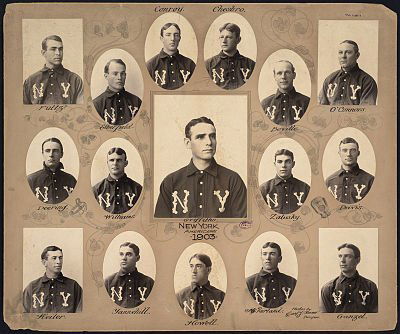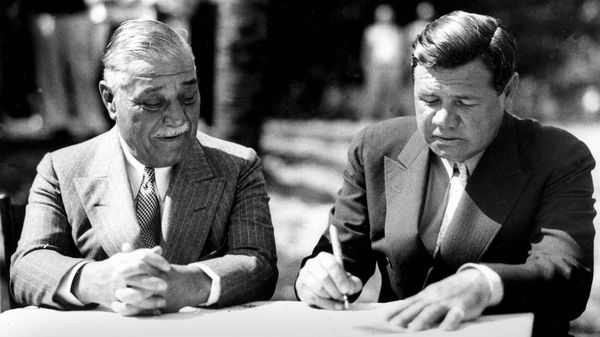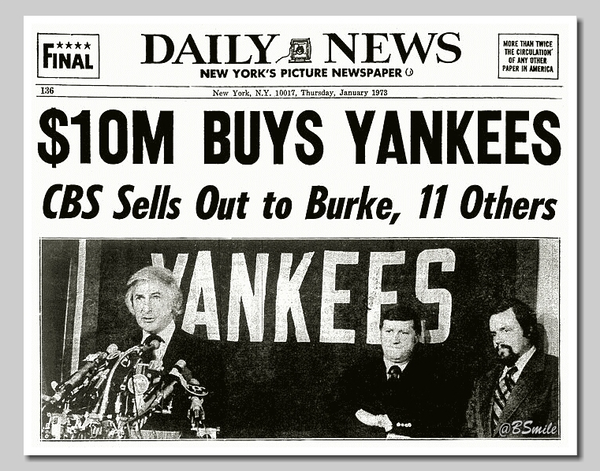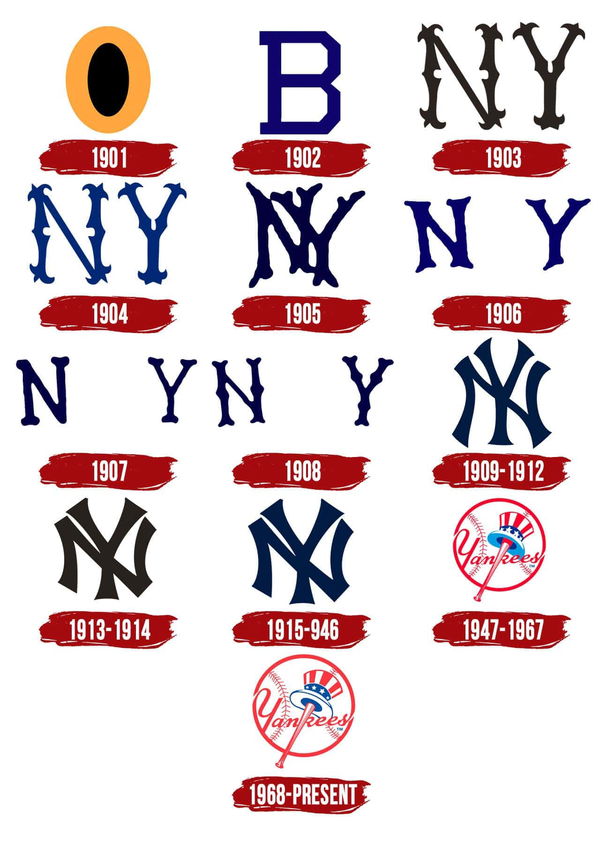

They say money can’t buy love. But for the Bronx, it bought dynasties. The New York Yankees, a name juxtaposed with baseball glory, isn’t just a mega-franchise. It is a billion-dollar behemoth that a fascinating crew of billionaire owners sculpted. Who were these individuals, and what’s the lowdown on them?
Watch What’s Trending Now!
Well, one thing is for sure, each man left his mark. Some celebrated the glittering victories of the World Series, some grappled with the painful and permanent scars of losing seasons. To dive in, strap on your pinstripes and rewind to unwind. This is the untold story of the folks who built the $7 billion Yankees with sweat, emotions, and a hint of controversy.
ADVERTISEMENT
Article continues below this ad
How Many Owners New York Yankees Had Until Now? An Overview of the Ownership History
The Yankees, that is known by its Bronx royalty, had a rather humble beginning. The club strutted around in pinstripes, not as the Yanks but as the Baltimore Orioles in 1901. Their journey, that was initially starved of direction, turned study in 1903. This happened when the duo – William Devery and Frank J. Farrell eyed the team’s potential. Then they did the unthinkable. They moved them to New York City. This established the first chapter in what would go on to be a fascinating chronicle of ownership, seeing the (newly established) Yankees rise. Fast forward a decade.
ADVERTISEMENT
Article continues below this ad

Enter Jacob Ruppert in 1915. The brewery baron brought with him a thirst for victory. It was he who christened the team Bronx Bombers, a nickname that was an adjective of how their bats performed. Under his watch, the Bronx Bombers tasted the World Series win in 1923 for the first time. During Ruppert’s Yankees, the period of 1920s and 30s, also called the golden age, the club dominated the league. They racked up championship rings on a spree only to witness the fortunes of the Yankees topple years later.
There were other ownership changes, too. In 1945, Dan Topping and Del Webb, with the fiery Larry MacPhail at their side, brought in another era of success. This decade was laden with 10 World Series titles before MacPhail’s volatile personality led to his exit. CBS, the media giant, briefly took the helm in the 1960s, but they struggled during their tenure. In 1973, a man named George Steinbrenner rose to the occasion, and the Yankees’ story has never been the same again.
ADVERTISEMENT
Article continues below this ad
The Foundation Stone: William Stephen Devery and Frank J. Farrell’s Arrival and Move to New York
American League (AL) president Ban Johnson wanted a franchise in the New York franchise. However, due to the powerful political figures and the Tammany Hall influence, they faced challenges. John McGraw saw this opportunity and confidentially met Frank J. Farrell, a well-connected Tammanyite. The intention was to look for potential ballpark sites. However, this was met with some friction from Johnson. Nevertheless, the team played in Hilltop Park, a modest, wood-frame ballpark. This eventually generated profit.
Watch This Story: Yankees Free Agent Lineup: 6 Players To Watch For The 2024 MLB Season
In the meantime, Farrell, eager for public recognition, took over as president. He also brought in his old friend Stephen Devery, aka Big Bill Devery, as a partner. Devery was a shady ex-police chief with Tammany connections of his own. He had walked the beat of one of Farrell’s initial gambling parlors, and the two have been friends ever since. He was now a ‘sportsman’ and not a ‘gambler’.
There was a clear power play here and hence came the need to scout a modern ballpark. An eventual failure. As the team started to crumble under the former gamblers, Farrell and Devery had to reluctantly sell the team for $463,000, under immense financial pressure.
The Golden Period: Jacob Ruppert’s Impact on the New York Yankees as an Owner
It was Jacob Ruppert, a wealthy and well-connected brewer, who appeared as a potential buyer amid the Federal League competition. Tillinghast L’Hommedieu Huston, another wealthy investor, joined Ruppert in the purchase, agreeing to take on the struggling team. There was, however, some reluctance.

Although there was an initial strain in the partnership, Ruppert and Huston’s competitive drive and desire to spend laid the foundation for future success. Then, the recruitment started. Miller Huggins as manager and Ed Barrow as general manager were two substantial steps toward building the organization. But when in 1920, Babe Ruth and other key players from the cash-strapped Boston Red Sox were onboarded, the team took off to a whole new orbit.
The Sinking Ship: When Everything Falls Flat for New York
Following what one considers pre-modern history in the Yankees’ books, came the ‘CBS Era’. One shudders to talk about the horrid 8 seasons(1965-1972) when the team was under Steinbrenner’s predecessor. What role did the Columbia Broadcasting System play in this story?

It was a different baseball era, and the Yankees were new to it. Money could no longer buy success. On one hand, the draft and free agency hadn’t yet arrived. While the team’s previous dominance was backed heavily by signing top amateur talent, it was a privilege no longer available. But CBS did its part to save the team from floundering. They hired Lee MacPhail as the General Manager, who initiated a strategic rebuild through the draft and clever trades. With the onset of the 1970s, the Yankees were competitive again. The 1970 New York Yankees’ season was the 68th season for the franchise, wherein they finished second in the AL East.
A Helping Hand: George Steinbrenner’s Arrival and the Rise
CBS played an uncompromised role in securing the future of the Yankees in New York. They got Mayor Lindsay on board with the idea of renovating the Yankee Stadium. This was a crucial upgrade that would later generate significant revenue under free agency. The change done here not only ensured the team’s persistence in the Big Apple but also paved the way for their successor, Steinbrenner’s future success, who saw a family in the team.
Former #Yankees and #Mets OF Darryl Strawberry talks about former @Yankees owner George Steinbrenner. https://t.co/4kZDVVxxrk
Apple: https://t.co/hzcBwLS8Iv
Spotify: https://t.co/iq8lu55ob6 pic.twitter.com/fuuEZRov4t— WGBB Sports Talk New York (@WGBBsportstalk) January 5, 2021
The modern history of the NYY celebrated Steinbrenner’s arrival, thanks to him ushering in a renewed era of dominance. But it is key to acknowledge the foundation CBS laid during its infamous years. Their commitment to re-surge, shrewd trades, and renovations set the stage for the Yankees’ renewed optics. The ‘sinking ship’ wasn’t really sinking, rather was only navigating through a tough landscape.
The Owner in the Modern Period: Hal Steinbrenner as a New York Yankees Owner
Hal Steinbrenner’s rise to Yankees ownership wasn’t a straight path. After his father’s deteriorating health and Swindal’s subsequent exit because of a divorce with Jennifer, Sr. Steinbrenner’s daughter, he emerged as the apparent heir in 2007. He officially took control in 2008 inheriting a power-packed franchise. It was, at the time, valued at $1.6 billion and boasted the highest payroll in baseball.

Though the primary Yankees principles of reinvestment and high spending remained intact, Hal’s era also witnessed significant shifts. He restructured and streamlined the Yankees’ front office, empowering General Manager Brian Cashman. He also navigated the changing media landscape and sold a part of the YES Network for extended financial power.
Hal is not George in terms of matching the level of public theatrics. But his effectiveness has kept the New York Yankees at the forefront of baseball to date, even after a history of dramatic crests and troughs.
ADVERTISEMENT
ADVERTISEMENT
ADVERTISEMENT
ADVERTISEMENT


